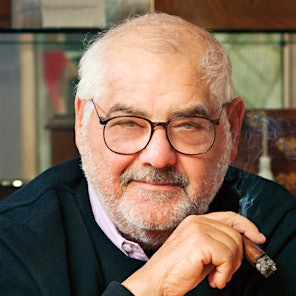The Fat Cigar Trend Spreads to Cuba

Cigars, like bears bulking up for a long winter’s nap, are getting fatter. The plump cigar trend that began in the non-Cuban cigar world has arrived in Havana, and some of today’s most popular Cuban cigars are among the fattest in history.
“Sales of heavy-ring-gauge cigars—50 or higher— now for more than 50 percent of Habanos S.A.’s total sales,” says Fernando Domínguez Valdés-Hevia, cigar director of Imperial Tobacco PLC, which owns half of Habanos, Cuba’s cigar export organization. Fat cigar sales, he says, are up by 50 percent over the past decade. “Based on the continuous research we carry out in our main markets, we have confirmed that consumers’ preferences are going towards thicker cigars. Additionally, in our more mature markets, current social habits are accelerating the trend towards shorter, but wider, sizes to enjoy the same flavor and intensity in less time.”
It wasn’t always so. Regular production, straight-sided Cuban cigars have traditionally topped out at 50 ring gauge, the girth of a standard Cuban robusto. Consider that cigars commonly considered “large” have ring gauges in the 40s. Cuban double coronas are 49-ring-gauge smokes, Churchills a mere 47 and corona gordas a downright slim 46. Decades ago, gentlemen preferred even thinner cigars, as anyone who has tried—unsuccessfully—to slice open a modern smoke with an antique cigar cutter can attest.
Samuel Menzi of the Casa del Habano in Zurich, Switzerland, who has sold cigars for more than 35 years, has seen firsthand the evolution of Cuban cigars. Thirty years ago “thin, long cigars were very fashionable,” he says. Panetelas and lonsdales, with ring gauges from 38 to 42, were in vogue. Today, Cuba is eliminating thin cigars, and it recently deleted the lonsdale-sized Sancho Panza Molinos and Vegas Robaina Clasicos from its porfolio.
Cuba dipped a toe in the fat-cigar waters in 2002 with the debut of the Cohiba Siglo VI, measuring 5 7/8 inches by 52 ring. It was new ground for a parejo, but it would take another eight years before the fat-cigar trend really caught fire in Havana.
Jump to the 2010 Habanos Festival, when Cuba unveiled the Cohiba Behike BHK trio of cigars. The portly, pigtailed smokes came in three ring gauges: 52, 54 and a massive 56. The BHK 52 was named Cigar Aficionado’s Cigar of the Year for 2010, with a rating of 97. The same year also saw the release of the Romeo y Julieta Wide Churchill, which at 5 1/8 inches by 55 ring became the thickest of Cuban Romeos. The smoke has scored 92 and 93 points.
In 2011, Cuba beefed up the Partagás brand with the Partagás Serie E No. 2 (93 points), which clocks in at 5 1/2 inches by 54 ring. Last year Cuba created a new shape with the Cohiba Pirámides Extra (93 points), a fatter, longer version of a standard Cuban pirámide measuring 6 5/16 inches long by 54 ring gauge.
Cuba has made several special releases with even larger sizes. The Sublimes vitola (6 1/2 by 54) has appeared on Montecristos and Cohibas. One of the most splendid Cuban sizes is the Maravillas No. 1, 7 1/4 inches by 55, seen most recently on the Hoyo de Monterrey Maravillas No. 1, which came to market in a special humidor last year.
Cuba’s Edición Limitadas are also fat. Those for 2013 all have ring gauges of 50 or more, none grander than the Hoyo de Monterrey Grand Epicure EL, 5 1/8 by 55 ring.
Will Cuba ever reach the extreme of a 6-inch-long, 60-ring-gauge smoke, which is so in vogue in the United States? Such a cigar might not be far away.


















